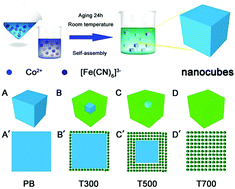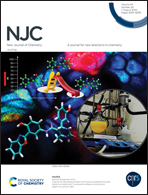Hierarchical porous CoxFe3−xO4 nanocubes obtained by calcining Prussian blue analogues as anodes for lithium-ion batteries†
Abstract
Mixed transitional oxides have attracted increasing attention as anode materials for lithium-ion batteries (LIBs) because of their enhanced lithium storage properties than single metal oxides. In this work, porous CoxFe3−xO4 nanocubes were successfully constructed by a facile two-step method using a cobalt–iron-based Prussian blue analogue (PBA) synthesized at room temperature as a precursor. The CoxFe3−xO4 nanocubes fabricated at different temperatures possessed diverse surface areas and pore volumes. When applied as LIB anode materials, the CoxFe3−xO4 nanocubes synthesized at 700 °C delivered the highest reversible capacity of about 1601 mA h g−1 at 100 mA g−1 after 60 cycles and exhibited the best rate capability with a capacity of 950 mA h g−1 at a high current density of 5000 mA g−1. The enhanced electrochemical performance could be attributed to the structural feature of large amounts of nanopores within the nanocubes, which could provide a large space for buffer volume expansion during Li+ insertion/extraction processes and improve the structure stability.



 Please wait while we load your content...
Please wait while we load your content...